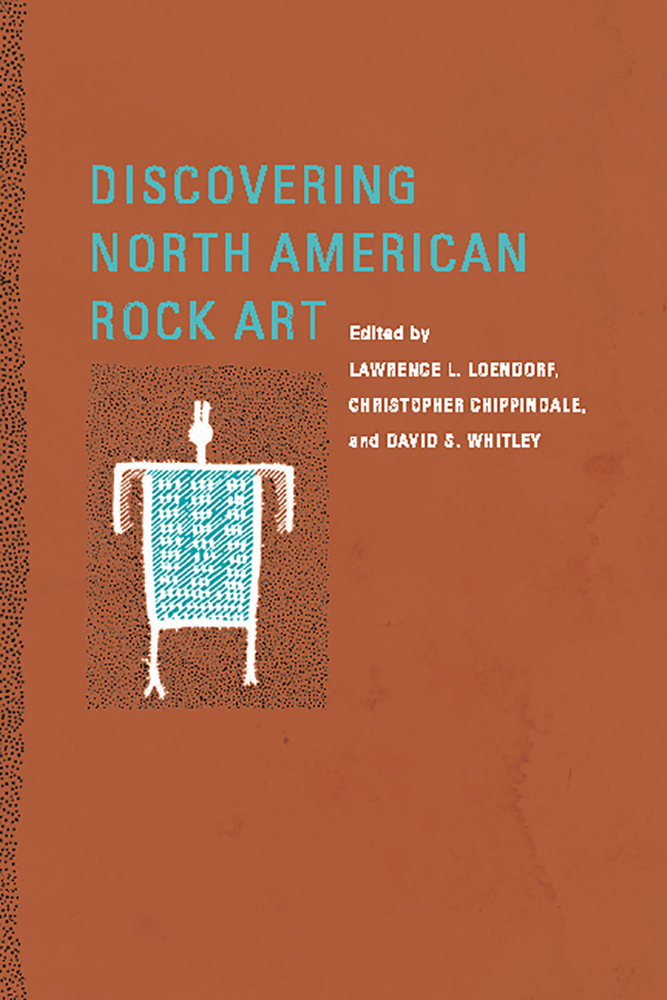Discovering North American Rock Art
Paperback ($35.00), Ebook ($35.00)
Buy
From the high plains of Canada to caves in the southeastern United States, images etched into and painted on stone by ancient Native Americans have aroused in observers the desire to understand their origins and meanings. Rock paintings and engravings can be found in nearly every state and province, and each region has its own distinctive story of discovery and evolving investigation of the rock art record. Rock art in the twenty-first century enjoys a large and growing popularity fueled by scholarly research and public interest alike.
This book explores the history of rock art research in North America and is the only volume in the past twenty-five years to provide coverage of the subject on a continental scale. Written by contributors active in rock art research, it examines sites that provide a cross-section of regions and topics and complements existing books on rock art by offering new information, insights, and approaches to research.
The first part of the volume explores different regional approaches to the study of rock art, including a set of varied responses to a single site as well as an overview of broader regional research investigations. It tells how Writing-on-Stone in southern Alberta, Canada, reflects changing thought about rock art from the 1870s to today; it describes the role of avocational archaeologists in the Mississippi Valley, where rock art styles differ on each side of the river; it explores discoveries in southwestern mountains and southeastern caves; and it integrates the investigation of cupules along Georgia’s Yellow River into a full study of a site and its context. The book also compares the differences between rock art research in the United States and France: from the outset, rock art was of only marginal interest to most U.S. archaeologists, while French prehistorians considered cave art an integral part of archaeological research. The book’s second part is concerned with working with the images today and includes coverage of gender interests, government sponsorship, the role of amateurs in research, and chronometric studies.
Much has changed in our understanding of rock art since Cotton Mather first wrote in 1714 of a strange inscription on a Massachusetts boulder, and the cutting-edge contributions in this volume tell us much about both the ancient place of these enduring images and their modern meanings. Discovering North American Rock Art distills today’s most authoritative knowledge of the field and is an essential volume for both specialists and hobbyists.
This book explores the history of rock art research in North America and is the only volume in the past twenty-five years to provide coverage of the subject on a continental scale. Written by contributors active in rock art research, it examines sites that provide a cross-section of regions and topics and complements existing books on rock art by offering new information, insights, and approaches to research.
The first part of the volume explores different regional approaches to the study of rock art, including a set of varied responses to a single site as well as an overview of broader regional research investigations. It tells how Writing-on-Stone in southern Alberta, Canada, reflects changing thought about rock art from the 1870s to today; it describes the role of avocational archaeologists in the Mississippi Valley, where rock art styles differ on each side of the river; it explores discoveries in southwestern mountains and southeastern caves; and it integrates the investigation of cupules along Georgia’s Yellow River into a full study of a site and its context. The book also compares the differences between rock art research in the United States and France: from the outset, rock art was of only marginal interest to most U.S. archaeologists, while French prehistorians considered cave art an integral part of archaeological research. The book’s second part is concerned with working with the images today and includes coverage of gender interests, government sponsorship, the role of amateurs in research, and chronometric studies.
Much has changed in our understanding of rock art since Cotton Mather first wrote in 1714 of a strange inscription on a Massachusetts boulder, and the cutting-edge contributions in this volume tell us much about both the ancient place of these enduring images and their modern meanings. Discovering North American Rock Art distills today’s most authoritative knowledge of the field and is an essential volume for both specialists and hobbyists.
“Discovering North American Rock Art is a superb scrutiny especially recommended for students and art historians interested in North American archaeology and Native American studies, as well as this ancient and enduring form of artistic human expression”—Midwest Book Review
“This book will be of interest to rock art specialists and students.”—Great Plains Research
“An excellent cross-section of rock art studies in North America . . . offers tremendous insight into current thinking regarding rock art research in North America and beyond.”—Eric W. Ritter, Phoebe A. Hearst Museum of Anthropology, University of California, Berkeley
“This book will be of interest to rock art specialists and students.”—Great Plains Research
“An excellent cross-section of rock art studies in North America . . . offers tremendous insight into current thinking regarding rock art research in North America and beyond.”—Eric W. Ritter, Phoebe A. Hearst Museum of Anthropology, University of California, Berkeley
 The University of Arizona Press
The University of Arizona Press

